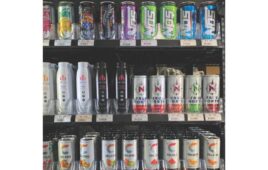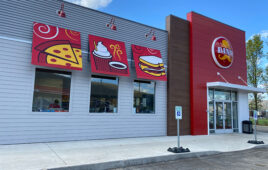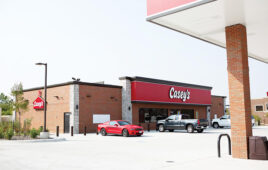Not doing foodservice? Then you better start thinking about it.
That was the key message from a host of retailers, consultants and foodservice experts as CSD presented its 2009 Foodservice Webcast Series. In fact, just having food items is hardly enough. Chains need to invest in specialty fare and ethnic cuisines in order to differentiate their offerings and attract a steady stream of new and repeat customers.
The free Webcast series also revealed convenience retailers are putting more emphasis on foodservice to better position their businesses for future growth.
“Foodservice can help retailers today navigate through the tougher times and strengthen the long term viability of the store,” said David Bishop, managing partner of Balvor LLC in Barrington, Ill. “Foodservice is growing at a faster rate than the overall stores. Consumers are moving into foodservice because their lifestyles are changing, and they are looking for more convenient, on-the-go products.”
Further impacting the trend, motor fuel costs have declined almost 38%, down to $2.05 this March from $3.29 in March 2008, which essentially puts money back in the pockets of consumers that they can spend inside the store on additional products, such as food.
“I’ve been a fuel retailer my entire life, and we couldn’t ignore the trend any longer. We need to get into the food business (to grow),” said Scott Zaremba, president and CEO of Zarco 66 Earth Friendly Fuels, which operates eight stores in Kansas.
Play Fare
Increased demand for foodservice offers new opportunities for convenience retailers to grow market identity based on branding, range of products or type of service. Bishop suggested determining what consumers are demanding most and creating a destination for that product within the store.
For example, research has shown purchase intent of coffee consumers is almost as high as that of cigarette consumers, meaning consumers decide to buy coffee before arriving on the lot. This knowledge can help stores drive traffic toward coffee. This might involve using higher quality menu boards, upgrading the coffee roast and making the product more visible and accessible to convey the message that coffee is important. The hot dispensed beverage category has only grown 0.8% since last year compared to 1.3% for foodservice overall. But, given the increased competition from coffee shops and quick-service restaurants (QSR), specifically McDonald’s and Dunkin’ Donuts, the growth is still a positive sign. Another possible reason for java’s slower volume growth is the surge in sales of energy drinks.
Evaluating the competition
Since McDonald’s launched its premium coffee program last year, which now is in more than half its stores, its coffee sales have grown by 30%. McDonald’s also expanded its hours, opening earlier and running some stores 24 hours. Still, the broader range of lattes, hot chocolate and other hot dispensed beverages competes more directly with Starbucks and targets less loyal customers who are somewhat displeased with how the value proposition has changed.
By upgrading its product offering, McDonald’s has moved up market in terms of its coffee, and prices have followed, moving from around one dollar, to $1.29 in some cities, such as Chicago. In doing this, McDonald’s has helped raise the low end of the price range for coffee in the market, which has given convenience store operators a little more leverage and pricing power within their own programs, depending on their situation.
As part of an exclusive CSD/Balvor Foodservice Study, 40% of retailers said lower retail prices are one of the top two competitive threats facing the industry. Freshness also is a critical factor in consumer perception of quality, and thus has become a main component of more retail food programs.
Food prepared on site experienced the most growth this year (1.3%), according the CSD/Balvor study, and continues to be the largest component of the business, representing 50% of dollar sales. Food prepared on site also is generally the foundation of convenience store food programs, which contain everything from bakery items to roller grill programs. Improvements in the scope and quality of the food offerings are driving the demand.
Overall, the biggest competitive threat to convenience stores are value meals, according to 67% of the retailers surveyed.
Most retailers are offering the bundled meal anchored with a food item and a higher margin dispensed beverage. “Bundled meals help simplify consumer choice and speed up the service time, while also increasing the penny profit per transaction for the retailer,” Bishop said. “To be successful with bundled meals retailers must effectively communicate the savings to the consumer.”
Marketers view a stronger lineup of new products as another major competitive threat. “Retailers, especially outside of convenience, are broadening their new product offerings to increase consumption and expand consumer appeal to different dayparts,” Bishop said.
Dunkin’ Donuts, for example, is offering breakfast and lunch paninis, positioning its business to compete more for the afternoon daypart. McDonald’s, known for its multiple dayparts, has added chicken wraps in the afternoon for consumers interested in a lighter snack rather than a full meal.
Tactics for a Changing Economy
When venturing into foodservice, it is important to know your demographic and the trends impacting your consumers. National trends include demand for ethnic foods like Mexican, Asian and Mediterranean; regional and seasonal flavors; vegetarian options and low-sodium meal solutions, said Steven Weck, founder and president of Food Business Resource in Lenexa, Kan. In addition, consumers are more interested in exploring flavor combinations.
Using touchscreens to take orders for on-site prepared foods increases the number of correct orders and puts extra options, such as high-margin desserts, directly in front of the customer, increasing overall sales, noted Jerry Weiner, vice president of foodservice for Rutter’s Farm Stores, which operates 57 stores in York, Pa.
Limited Time Only (LTO) items have increased 39% in the food prepared on-site category, the CSD/Balvor study revealed. To succeed with LTO items, retailers must effectively inform the consumer about the temporary item and manage the supply side, so as not to be left with a lot of unsold inventory. Reward programs also can drive repeat business. Because hot dispensed beverages have a high percentage of planned purchases, having an incentive to reward consumer patronage is an effective way to retain business. Some 26% of convenience store retailers are increasing the use of punch cards for hot dispensed beverages.
To meet consumer demand for freshness, wholesalers are investing in everything from infrastructure and transportation to warehousing to deliver fresh products to the store more frequently.
Finally, storeowners should further study their consumer demographic, commit to a food program over the long term and modify selections. “In the food business, there are hard times, and you need to be able to work through that and be in it for the long term,” Zaremba said. “You need to be the one committed because everything starts from the top.”
CSD’s Foodservice Webcast Series is available free on-demand here. CSD




